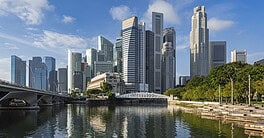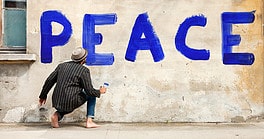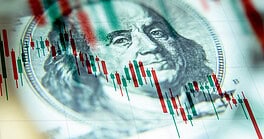Hundreds of millions of people globally have no checking or savings bank account. Financial exclusion undermines their quality of life and hold their nations’ economies back.

According to the Oxford English Dictionary, the term “unbanked” refers to a person or entity “not having access to the services of a bank or similar financial organization.” You would be out of luck if your preferred vocabulary is the Merriam-Webster, which concisely explains that the term describes something that is “not deposited in a bank.”
Yet, around the globe, there are scores of such thinly or ill-defined specimens: more than 1.6 billion adults, according to the World Bank. Never mind the practicality of cheques or ATM machines, let alone the luxury of credit cards or airline miles: the unbanked have no checking, savings or mobile money provider accounts, no access to financial products like insurance, loans or mortgages, no protection for their money from theft or loss. They are also more likely to be poor—and to stay poor too.
Most of us take basic access to financial services for granted. When the COVID-19 pandemic struck, many people relied on digital payments to have groceries and purchases delivered to their homes. Avoiding crowds in stores and marketplaces became a matter of life and death and some nations—from Sweden and Norway, to South Korea, China and Australia—are increasingly becoming cashless societies, making it difficult to pay with paper bills.
Financial exclusion is expensive. It impacts people’s quality of life and it prevents them from investing in their future, it leaves them with limited safeguards if they lose their job or fall ill, it makes them vulnerable to usurious and predatory lenders. In other words, access to financial services is a vital factor for coping with and escaping poverty, which is also why 7 out of the 17 Sustainable Development Goals promoted by the United Nations see it as an essential factor in improving the condition of the most marginalized.
But financial exclusion is costly not only for those directly affected: it impedes nations’ economic growth and development. Consulting firm EY Global has estimated that broader access banking, savings and lending products could boost GDP by up to 14% in large emerging countries such as India and up to 30% in frontier economies such as Kenya. All variables aside, the unbanked present strikingly similar traits at every latitude and longitude: they are low income and less educated, they often lack the identification and documentation requirements to open a bank account, they tend to live in rural areas far from bank branches. In many nations, they belong to ethnic or religious minorities; in all of them, they are overwhelmingly women.
Morocco, Vietnam, Egypt, Philippines, Mexico: these are the top 5 countries, according to a just-released study by the British research platform Merchant Machine, where the unbanked population is the largest. On a global level, the regions with the highest proportion of developing or emerging economies, quite predictably, top the list: in the Middle East and Africa the 50% of the population is financially excluded, South and Central America follow at 38%, Eastern Europe and the former Soviet republics at 33%, Asia Pacific’s share stands at 24%.
But make no mistake: the two most-developed regions of the world are no shining examples of financial inclusion either—furthermore, having a bank account does not always equal being able to access certain correlated services such as loans. While in Western and Central Europe a relatively low 6% of the population experiences a measure of financial exclusion, the proportion reaches 21% in North America—a figure that closely mirrors a 2019 report by the Federal Reserve showing that 22% of adults in the United States (or 63 million) were underbanked (16%) or fully unbanked (6%).
Yet, if there is a silver lining in the current difficult circumstances, there are already signs that the COVID-19 pandemic could turn into a powerful booster of financial inclusion everywhere. Over the past year, a record number of new accounts have been opened worldwide by firms providing mobile money, fintech and online banking services. Looking ahead, the challenge will be reducing unequal access to digital infrastructures to further these advancements even more.
However, that alone will not be enough to enhance economic participation and eradicate extreme poverty in one magic rapid sweep. A survey released last year by the central bank of the Philippines—which in 2007 became the first monetary authority to establish an office dedicated to financial inclusion—explains why. With over 50 million individuals unbanked out of a total adult population of 72 million, the bank reported, almost half of them (45%) mentioned the lack of enough money as the top reason for not having an account. Most people who are unbanked are unbanked because they have no income in the first place. True financial inclusion begins by lifting the unbanked out of poverty.
|
World’s Most Unbanked Countries |
|---|
| Country | Total Population (Millions) | Unbanked Population (%) | Cash Transactions (%) | Card Transactions (%) | # of ATMs per 100,000 Adults | Internet Penetration (%) |
|---|---|---|---|---|---|---|
| Morocco | 36.9 | 71 | 41 | 27 | 28.6 | 62 |
| Vietnam | 97.3 | 69 | 26 | 35 | 25.9 | 66 |
| Egypt | 102.3 | 67 | 55 | 27 | 20.1 | 45 |
| Philippines | 109.6 | 66 | 37 | 22 | 29.0 | 60 |
| Mexico | 128.9 | 63 | 21 | 44 | 61.5 | 66 |
| Nigeria | 206.1 | 60 | 24 | 27 | 16.9 | 70 |
| Peru | 33.0 | 57 | 22 | 62 | 126.7 | 49 |
| Colombia | 50.9 | 54 | 15 | 55 | 41.3 | 62 |
| Indonesia | 273.5 | 51 | 13 | 34 | 53.3 | 55 |
| Argentina | 45.2 | 51 | 18 | 45 | 60.9 | 76 |
| Kenya | 53.8 | 44 | 40 | 25 | 7.7 | 83 |
| Romania | 19.2 | 42 | 78 | 19 | 64.4 | 64 |
| Kazakhstan | 18.8 | 41 | 60 | 20 | 85.9 | 76 |
| Ukraine | 43.7 | 37 | 60 | 28 | 96.3 | 57 |
| Uruguay | 3.5 | 36 | 26 | 53 | 120.1 | 68 |
| South Africa | 59.3 | 31 | 11 | 43 | 65.3 | 56 |
| Turkey | 84.3 | 31 | 8 | 71 | 84.0 | 65 |
| Brazil | 212.6 | 30 | 18 | 62 | 101.7 | 67 |
| Bulgaria | 7.0 | 28 | 63 | 26 | 94.3 | 63 |
| Saudi Arabia | 34.8 | 28 | 34 | 35 | 73.3 | 82 |
| Chile | 19.1 | 26 | 11 | 70 | 50.0 | 82 |
| Hungary | 9.7 | 25 | 45 | 44 | 61.0 | 77 |
| Russia | 145.9 | 24 | 17 | 37 | 165.5 | 76 |
| India | 1,380 | 20 | 17 | 32 | 21.0 | 34 |
| China | 1,439.3 | 20 | 6 | 22 | 95.6 | 54 |
| Czech Republic | 10.7 | 19 | 44 | 22 | 58.0 | 88 |
| Thailand | 69.8 | 18 | 16 | 26 | 115.1 | 53 |
| Lithuania | 2.7 | 17 | 12 | 24 | 38.6 | 78 |
| Slovakia | 5.5 | 16 | 41 | 17 | 61.8 | 82 |
| Greece | 10.4 | 15 | 29 | 54 | 63.4 | 70 |
| Malaysia | 32.4 | 15 | 11 | 32 | 44.7 | 80 |
| Poland | 37.9 | 13 | 12 | 25 | 70.6 | 76 |
| Latvia | 1.9 | 7 | 12 | 49 | 58.3 | 81 |
| Israel | 8.7 | 7 | 1 | 76 | 133.2 | 82 |
| USA | 331 | 7 | 4 | 59 | N/A | 89 |
| Spain | 46.8 | 6 | 11 | 49 | 106.3 | 85 |
| France | 65.3 | 6 | 5 | 55 | 98.3 | 90 |
| Italy | 60.5 | 6 | 5 | 55 | 98.3 | 90 |
| Taiwan | 23.8 | 6 | 12 | 42 | N/A | 88 |
| South Korea | 51.3 | 5 | 2 | 73 | 267.0 | 95 |
| Hong Kong | 7.5 | 5 | 2 | 73 | 53.2 | 89 |
| UK | 67.9 | 4 | 7 | 56 | 110.3 | 95 |
| Estonia | 1.3 | 2 | 12 | 21 | 66.9 | 88 |
| Austria | 9.0 | 2 | 4 | 28 | 172.0 | 88 |
| Singapore | 5.9 | 2 | 4 | 75 | 58.8 | 84 |
| Japan | 126.5 | 2 | 6 | 68 | 124.1 | 93 |
| Switzerland | 8.7 | 2 | 2 | 25 | 97.2 | 94 |
| Germany | 83.8 | 1 | 4 | 11 | 119.9 | 93 |
| Belgium | 11.6 | 1 | 6 | 51 | 81.0 | 88 |
| New Zealand | 4.8 | 1 | 3 | 55 | 63.5 | 91 |
| Australia | 25.5 | 0 | 5 | 53 | 146.1 | 88 |
| Canada | 37.7 | 0 | 3 | 73 | 214.1 | 93 |
| Denmark | 5.8 | 0 | 3 | 54 | 44.8 | 97 |
| Netherlands | 17.1 | 0 | 0 | 19 | 41.1 | 93 |
| Finland | 5.5 | 0 | 2 | 23 | 34.7 | 96 |
| Sweden | 10.1 | 0 | 2 | 46 | 31.9 | 96 |
| Norway | 5.4 | 0 | 3 | 50 | 31.6 | 97 |
Source: Merchant Machine, 2021



